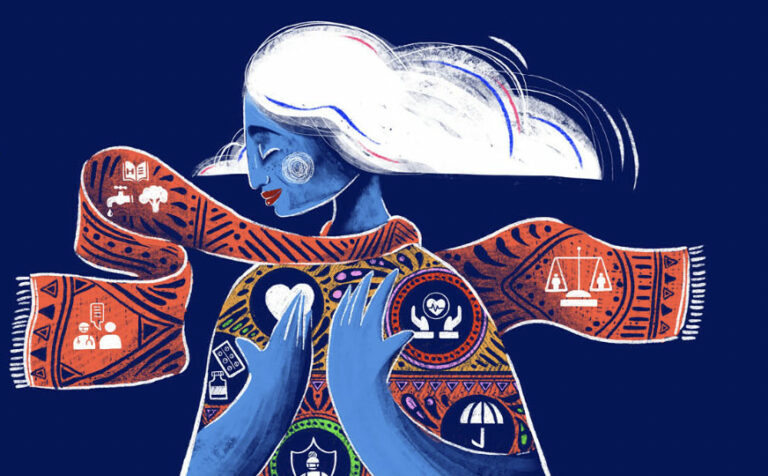
Protest and bloodshed on the path to democracy in Central and Eastern Europe
Author: Mariia Kobchenko, Ukrainian YEA
The crisis that engulfed the countries of the former socialist bloc at the end of the 1980s manifested itself in economic, political, ideological and moral spheres. The political bankruptcy of the governing parties, the incompetence of their administrations and the shortcomings of the command economy, and people’s growing reluctance to live under authoritarian regimes — all contributed to the emergence of revolutions. Each country of the former socialist bloc in Eastern and Central Europe followed its own path to bring about change to achieve a democratic society – ranging from peaceful means to bloody clashes. Most widely and most critically affected were Ukraine, Bulgaria, Czechoslovakia, and Romania. In Ukraine this process, which began in the ’80s, is still being played out before our eyes.
The period 1980-1990 was characterised by social and economic unrest in the region, as the Soviet Union, under Mikhail Gorbachev, attempted to cast off its dark totalitarian past and began looking towards the West. The consequences of this were experienced differently from country to country. In Bulgaria for example, in the late ’80s, the authoritarian ruler Todor Zhivkov introduced a series of assimilation policies that restricted the rights of the Muslim population. Consequently, as many as 300,000 Muslim Bulgarians emigrated to Turkey and the resulting shortage of farm labourers led to a substantial drop in the country’s agricultural production. Large demonstrations followed and under pressure from the Bulgarian Communist Party, on 10 November 1989, Zhikov resigned. Communist hardliners were expelled and the party transformed itself into the Bulgarian Socialist Party. It held the country’s first free elections in modern times in June 1990. Although the transition to a free-market economy continues to create challenges and the country has struggled with corruption and a brain drain, it became a NATO member in 2004 and a member of the European Union in 2007.
The so-called ‘Velvet Revolution’ in Czechoslovakia took place over roughly three weeks in November 1989. The immediate catalyst was a peaceful demonstration to commemorate the 50th anniversary of a Nazi attack on Prague University in 1939, an event which led to several deaths and the arrest of over a thousand students. The commemorative demonstration of 1989 brought up to 750,000 people onto the street, rapidly expanding into a wider protest against the Communist regime, and prompting a two-day general strike. In the face of increasing popular unrest and the collapse of other neighbouring Warsaw Pact governments, the Communist Party of Czechoslovakia relinquished power. A coalition government was formed and democratic elections took place in June of the following year. These were to lead to the dissolution of Czechoslovakia on 31 December 1992, and the establishment of the Czech and Slovak Republics in what was a largely peaceful democratic transition of power.
In Romania, nearly a decade of harsh economic austerity had led to considerable poverty and had made authoritarian ruler, Nicolae Ceausescu and his wife Elena, deeply unpopular. Their regime had been bolstered by a security service that was – even by the standards of Eastern Europe – particularly brutal. The Ceausescu’s rule came to an abrupt end after spontaneous protests broke out on 16 December in the provincial city of Timisoara, triggered by an attempt to evict a popular local priest who had objected to government policy. Unrest rapidly spread to the capital, where many citizens were attacked and killed by government forces in a brutal suppression of opposition. Following a hasty court-martial, the Ceausescus were executed, but fighting and street violence continued for several days afterwards, resulting in an estimated 7,000 deaths. In the midst of this turmoil, Romanian Communist Party official, Ion Iliescu, assumed power. He went on to become Romania’s first democratically elected head of state after elections were held in 1990 and initiated a process of gradual transition to a free market economy. Romania became an EU member state during the 2007 enlargement round.
In Ukraine, the democratisation process took a different path, and while the country gained nominal independence from Russia in 1990, subsequent Ukrainian leaders maintained very close ties with their larger neighbour. Democracy has unfolded gradually – and fitfully. Key moments of public protest included the Orange Revolution of 2004, a mass response to disputed presidential elections. The protests were led by Viktor Yushchenko and Yulia Tymoshenko who advocated for democratic reforms. These spontaneous demonstrations were known as ‘maidans’ and so many people took part that across the world the terms ‘maidan’ and ‘Ukraine’ became synonymous in many people’s minds. The peaceful protests, along with public pressure, eventually led to a rerun of the previous, contested, election, resulting in Yushchenko’s victory and marking a significant step in Ukraine’s path towards democratisation.
Another memorable ‘maidan’ also known as ‘The Revolution of Dignity’ took place in February 2014, in protest at the refusal of the president of the day, Viktor Yanukovych, to sign a political association and free trade agreement with the European Union. These protests became the loudest and most clearly formulated statement of Ukrainians about their values – dignity, freedom, independence, democracy. Tragically, the Ukranians’ struggle to assert these values has become even more bloody and terrible, as the country seeks to defend its territorial independence in the face of the Russian invasion.
Ukrainians must derive hope from the course charted by Bulgaria, Romania and the former Czechoslovakia. While those countries continue to face considerable challenges as they seek to strengthen their democratic institutions, to fight corruption and to resolve significant social and economic obstacles, they have cast off the shadow of totalitarianism and made the transition to become fully independent, democratic states.
LATEST

How you can help the planet every day

Building Europe: Poland’s experience of joining the European Union and lessons for Ukraine

World Health Day 2024: My Health, My Right

EUREKA MEETS EUROPE – opportunities to develop and study. My experience

Can you wear pink in the workplace?
More campaign pages:
Interested in the latest news and opportunities?
This website is managed by the EU-funded Regional Communication Programme for the Eastern Neighbourhood ('EU NEIGHBOURS east’), which complements and supports the communication of the Delegations of the European Union in the Eastern partner countries, and works under the guidance of the European Commission’s Directorate-General for Neighbourhood Policy and Enlargement Negotiations, and the European External Action Service. EU NEIGHBOURS east is implemented by a GOPA PACE-led consortium. It is part of the larger Neighbourhood Communication Programme (2020-2024) for the EU's Eastern and Southern Neighbourhood, which also includes 'EU NEIGHBOURS south’ project that runs the EU Neighbours portal.

The information on this site is subject to a Disclaimer and Protection of personal data. © European Union,